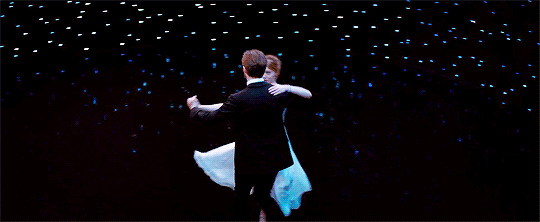
It’s quite striking how different movies can be based on where they’re made. Though perhaps that’s unfairly attributing the artistic vision of a director to the country in which he or she works. It’s probably a bit of both — a difference in market, and a difference in artistic influences.
In any case, aside from Persepolis, I haven’t seen any animated movies as quiet and beautiful as Claude Barras’s My Life as a Zucchini (Ma vie de Courgette) (2017, Sweden & France). Not to disparage the quality of American animated movies — on the contrary, I quite admire a lot of the work of the United States’s big animation studios including Pixar, Disney, Laika, and Dreamworks, and believe American animated filmmaking is becoming increasingly sophisticated in its tackling of more complicated themes like emotions with Pixar’s Inside Out and racism with Disney’s Zootopia (a trend I very much admire considering one of the main reasons why I’m interested in film to begin with is because of the incredible platform it has in teaching empathy and shifting public opinion under the guise of passive entertainment). ANYWAYS — I allow myself once again to become distracted and go off on random tangents. Back to Courgette.
Admittedly, much like Persepolis, it doesn’t seem to be made for the same very young audiences as might be Inside Out and Zootopia — hence why it’s able to adopt such a sparse, quiet tone (and also why I initiated this post with a musing into cinematic differences based on country of origin, as I notice that aside from Sausage Party, next to no US animated films are made for not very-young audiences, but clearly there seems to be bigger adult audiences for animated movies abroad) — Courgette is based around children, yes, but children adjusting to life in a group home after their parents die from alcohol abuse-related accidents or murder-suicide, or else have been taken away from by the state because of substance abuse, sexual abuse, mental illness, deportation. Despite these children having been abused and exposed to traumatic experiences at such a young age, they all retain a lot of their childlike innocence; they play, they giggle, they draw and dance and go sledding and swing on swings. They’re all a bit sad and damaged, but under loving adult influences at the home and the friendship of each other — all who have endured similar traumatic experiences — they learn to love again and regain some of their childlike innocence.
This combination of happy-sad is brilliantly captured in the film’s tone, pacing, and visuals: it feels very stark and quiet from an audio perspective — the dialogue is muted and sparse — but the bright colors used (much like a big box of Crayola crayons) feels innocent and joyous. The visual elements of Courgette is in fact breathtaking — the fluidity of the stop-motion animation, the use of light and shadow (particularly the shadows in the first scene, and the flashlight in a later orphanage scene when Simon was still tormenting Courgette). The colors. Like I mentioned earlier, a lot of the colors is bright and childlike — Courgette has bright blue hair and an orange nose and extremely pink lips and ears — but these are surrounded by colder, bluer tones — the spooky paleness of Courgette’s skin against his technicolor hair, the cold white tiled floors of his mom’s apartment: the coloring brilliantly captures the duality between these children having experienced trauma and cruelty so early in their life, but still being innocent children. Each child is colored in a combination of bright technicolor and muted colors, while the adults are in more neutral tones; Courgette’s mom’s apartment is in blue-white tones giving it the appearance of coldness, sadness, fear, while the orphanage, which turns out to be a place filled with love, is mostly Crayola-colored.
Courgette certainly paints an optimistic picture of life in a group-home — the orphanage workers are loving and have their best interests at heart, the children only mildly haze newcomers before embracing them as another member of their family — but I was relieved that Courgette declined to feature poor living conditions, negligent workers, pedophiles, as other stories about children living in group homes or orphanages or foster homes have before it, and instead depicted some light in this world, around so much darkness.
Gorgeous.
